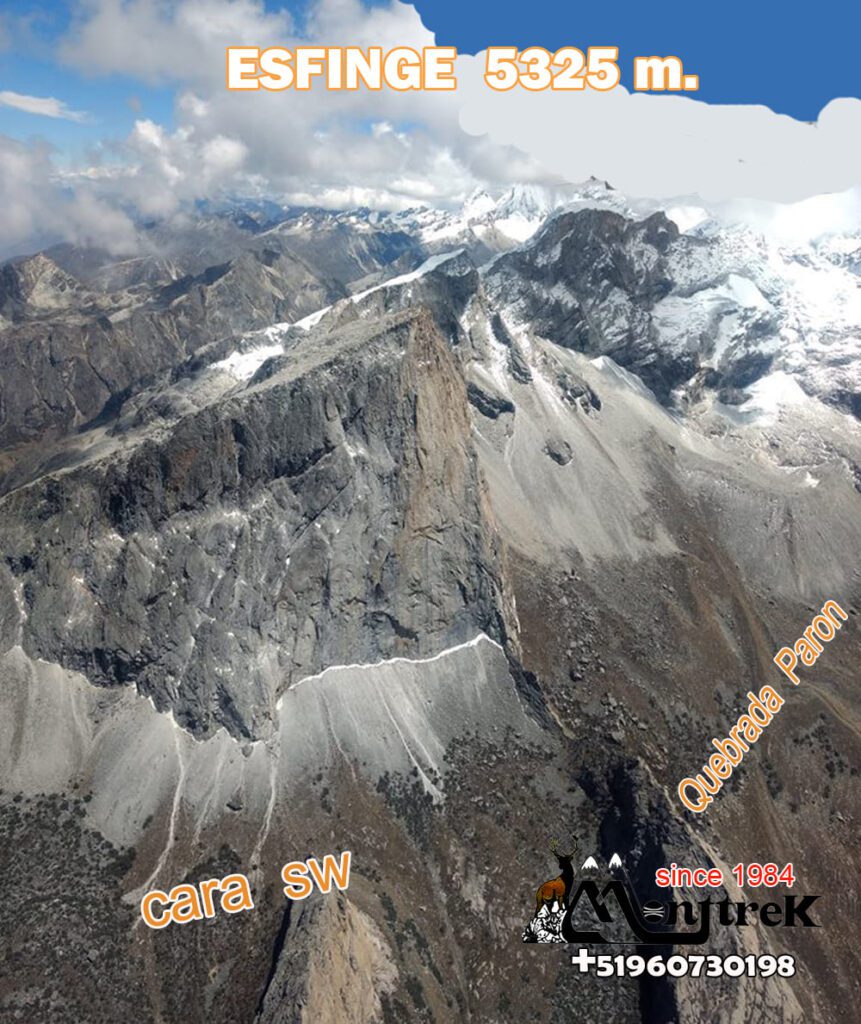THE HIDDEN SIDE OF THE SPHINX OR PARON HILL
THERE IS STILL NO OPENING ROUTE ON ITS SW SIDE
The Esfinge is a classic of the Cordillera Blanca, the elegant vertical granite wall on its east face seduces any long route climber (big wall). The combination of height with technical difficulty, with more than 700 meters of rock climbing, makes it a unique objective in Peru.
La Esfinge es la gran pared por excelencia de los Andes peruanos, representa la escalada estilo ballet y artística. La primera ruta fue abierta fue el 08 de Julio de 1985, por el alpinista Español Antonio Gómez Bojorquez más conocida como “Sevi”; VI, VI+, A1, 650-700 metros. Es la vía que cuenta con mayor número de repeticiones, con sus más de 700 metros de escalada tradicional y deportiva en granito de una altura de 5,325 m.s.n.m, con amplio espectro de dificultades técnicas; ubicada en la quebrada Parón.
The Sphinx is also known as Cerro Parón, La Torre Aguja, El Cerro Colca or La Roca. This last name is possibly because it is a giant, dry granite mountain, which contrasts radically with its snowy neighbors; Putaca, Aguja, Caraz, Artesonraju, Paria (Parón), Pirámide, Chacraraju, Pisco and the Huandoys; They are all found in the Quebrada (valley) Parón northern area of the Cordillera Blanca; which is easily accessible via the existing road.
The first route was opened on the east face with conventional and homemade material, 20 lengths of rope were needed, in 10 days and 9 consecutive bivouacs, with almost 20% of artificial climbing due to the existing vegetation in the fissures.

– Author: Porfirio Cacha –